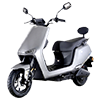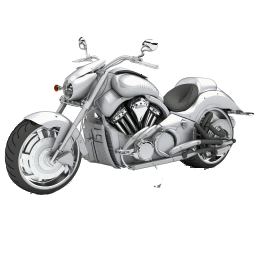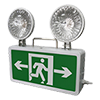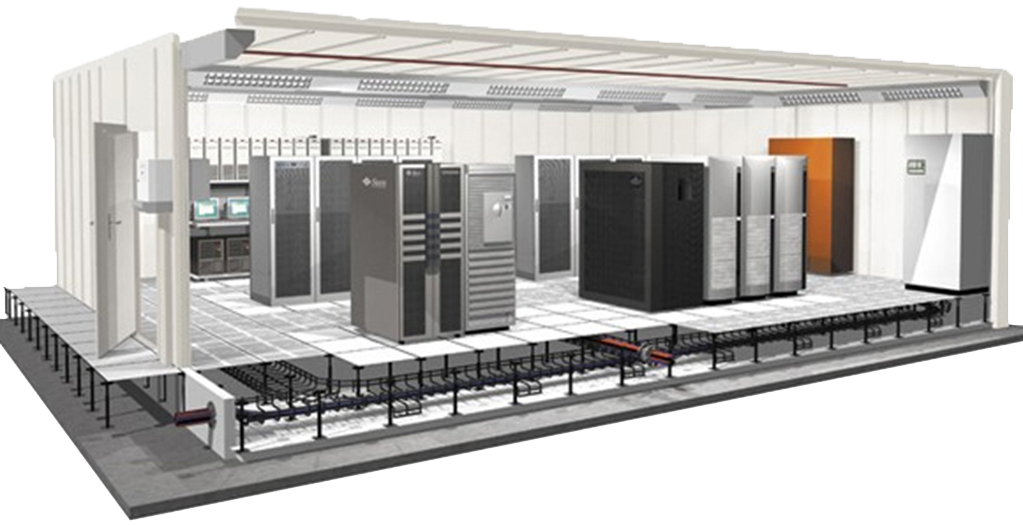Lithium vs Lead Acid: Performance, Cost, and Lifespan Compared
Release time:
2025-09-18
Share:
Lithium vs Lead Acid batteries: choosing the right battery can save you time and money. This guide provides a direct battery vs battery comparison, focusing on lifespan, cost, performance, and weight to help you choose the right technology for your needs.

1. Lithium vs Lead Acid: A Quick Comparison
Before we dive deep, here is a quick overview of how these two battery technologies stack up. This table summarizes the core specifications for a typical comparison of Lithium Iron Phosphate (LFP) against common sealed lead-acid batteries, based on industry data.
|
|
Lithium-ion (LiFePO4) |
Lead-Acid |
|
Energy Density |
≥150 Wh/kg |
45−50 Wh/kg |
|
Lifespan (Cycles) |
2,000−4,500+ |
450−800+ |
|
Charging Speed |
Fast (Normally 0.5−1C Rate) |
Slower (0.2−0.5C Rate) |
|
Recommended DOD |
≤80% |
≤50% |
|
Upfront Cost |
Higher |
Lower |
|
Weight & Volume |
Up to 50% Lighter/Smaller |
Heavier / Bulkier |
|
Cold Temp Performance |
Fair (−5℃ limit) |
Good (−20℃ limit) |
|
Safety Management |
BMS |
Chemically stable |
2. Lithium vs Lead Acid: Performance, Lifespan, and Efficiency
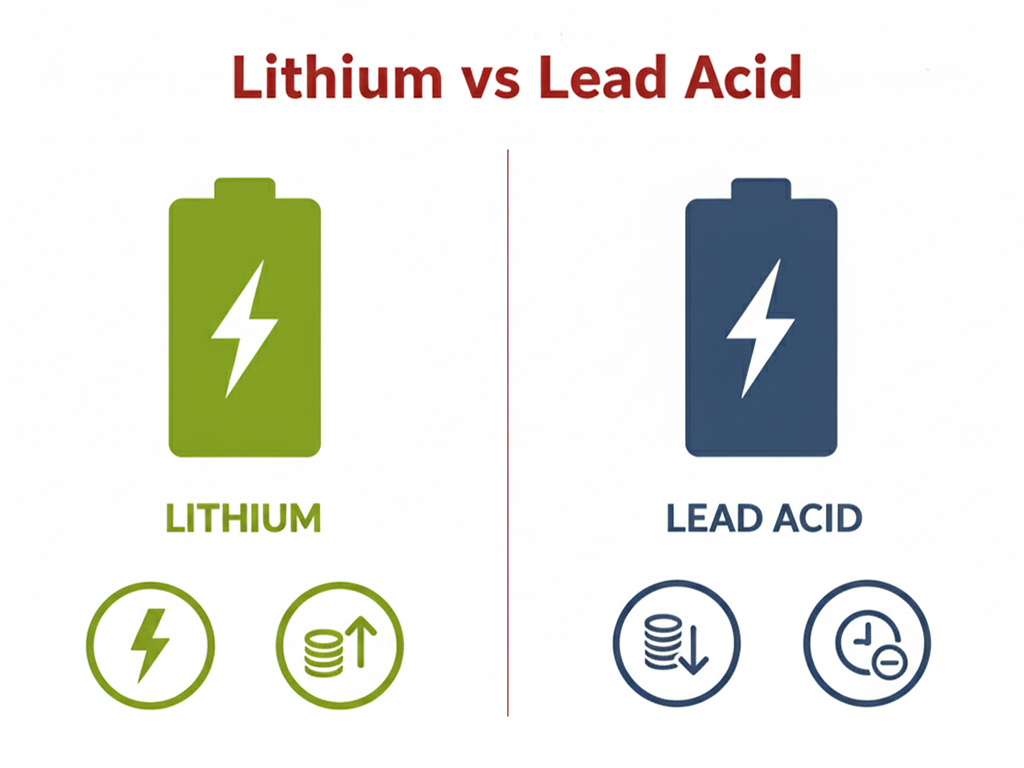
2.1. Lifespan: How Long Do Batteries Really Last?
Cycle life: A common starter-type Lithium Iron Phosphate (LiFePO4) battery can deliver around 2,000 charge cycles at 100% DOD and over 4,500 cycles at 50% DOD, while the typical Lead-acid battery lifespan for similar use is only about 450 cycles at 100% DOD and 800 cycles at 50% DOD.
Discharge: To preserve its life, a lead-acid battery should only be discharged to 50% limit of its capacity, whereas a lithium battery can safely handle 80–100% discharge without significant damage.
Best-fit applications: both cycle life & discharge abilities give lithium a massive advantage in applications requiring frequent, deep discharges-like industrial backup, energy storage solutions, portable power stations, and C&I—they easily outlast the average lead-acid battery lifespan. However, for things like motorcycle starting, the battery is only discharged by 1-3% to crank the engine and is immediately recharged by the alternator. In this scenario, the long cycle life of lithium offers less of a practical advantage, and a well-maintained lead-acid battery provides years of reliable service. So, when you ask: do lithium batteries last longer? It really depends on how they’re used.
2.2. Energy Density: Power in a Smaller Package
Energy density is where lithium technology has a distinct physical advantage. A lithium-ion battery has an energy density of over 150 Wh/kg, while lead-acid is around 45−50 Wh/kg. This means a lithium battery can be less than half the volume and battery weight of a lead-acid battery with the same capacity. This difference in lithium ion battery weight compared to the weight of a lead acid battery is a game-changer for applications where every kilogram matters.
For stationary applications—like regular powersports, lawn mowers, UPS, energy storage systems, fire and security systems, or power tools—the heavier nature of lead-acid is far less of a drawback. In these use cases, factors like cost, safety, and reliability often outweigh the benefits of lower battery weight.
2.3. Charging and Discharging: Speed and Efficiency
Speed (C-rate)
Lithium batteries charge much faster than lead-acid batteries. A typical lithium battery can handle a charge rate of 0.5C to 1C — high-rate lithium batteries can go up to 60C, while a lead-acid battery is limited to a slower 0.2C to 0.5C rate. The table below illustrates how a 12 V 1 kWh battery of each type would typically charge.
|
Battery Type |
Charge Rate |
Full Charge Time for 1 kWh Battery |
|
Lithium-ion |
0.5–1C |
~1–2 hours |
|
Lead-acid |
0.2–0.5C |
~2–6 hours |
Typical Charging Time for a 1 kWh Battery (12V)
Efficiency (Efficiency =Discharge Energy/Charge Energy×100%)
Lithium batteries also charge more efficiently. The lithium ion battery efficiency is over 95%, while lead-acid is around 85%. This makes lithium ideal for solar storage and industrial uses, especially for applications requiring consistent energy output.
Discharge Curve
A key performance metric for starting engines is the ability to deliver a massive burst of current. Lead-acid batteries are exceptionally good at this, providing high surge currents at a low cost. Although the discharge curve of lead acid battery is less stable under sustained load, the proven chemistry of lead-acid makes it well suited for the short, powerful bursts needed to start an engine, maintaining its status as the standard for starting applications.
3. Cost and Supply Trends: Lithium-ion vs Lead Acid Battery Price
Upfront Cost: The Lead-Acid Advantage
The most significant advantage of lead-acid battery technology is its lower upfront cost. For budget-conscious users, the lower price of lead-acid batteries makes them a highly practical choice.
Future Dynamics: Resource Scarcity and Price Outlook
It is crucial to consider future supply dynamics when evaluating cost. Lithium is a finite and non-renewable resource. The boom in energy storage and electric vehicle applications has already driven up the price of lithium-ion cells. As demand continues to surge, lithium may become increasingly expensive due to resource constraints. In contrast, lead is a nearly 100% recyclable metal, and its mature recycling industry helps keep its price relatively low and stable. However, the recycling infrastructure for lithium-ion batteries is far less developed than that for lead-acid batteries, which means that many spent lithium-ion batteries currently end up in landfills.
4. Types of Lead Acid and Lithium-ion Batteries
4.1. The Lead-Acid Family: What is Flooded, Gel, and AGM Battery?
|
Dimension |
Subcategory |
|
Chemistry |
Lead-Acid, Lead-Carbon |
|
Electrolyte |
Flooded, Gel, Semi-Solid |
|
Separator |
PP/PE, AGM (Absorbent Glass Mat) |
|
Activation |
Dry Charged, Factory Activated |
|
Sealing |
VLA (Vented Lead-Acid), VRLA (Valve-Regulated Lead-Acid) |
|
Feature |
MF (Maintenance Free), High Performance, Digital Screen, Intelligent, Deep Cycle |
Lead-Acid Battery Classification: 6-Dimensional(including lead-carbon)
The term lead batteries covers a family of technologies. The oldest type is the flooded or vla battery (Vented Lead-Acid). These are the traditional acidic batteries that require you to periodically top them off with distilled water and must be kept upright in a well-ventilated area.
The common debate “agm vs lead acid battery”, ”sealed lead acid vs agm” or “Is agm better than lead acid? “is a frequent confusion, as AGM is a type of lead-acid battery separator material. AGM (Absorbent Glass Mat) is actually one of sealed lead-acid (SLA) battery that uses a fiberglass mat to absorb the electrolyte in place. Previous-generation batteries used plastic separators. The difference between AGM and lead acid battery of the plastic separator is that AGM provides better conductivity and performance. All OUTDO lead-acid batteries is now agm batteries.
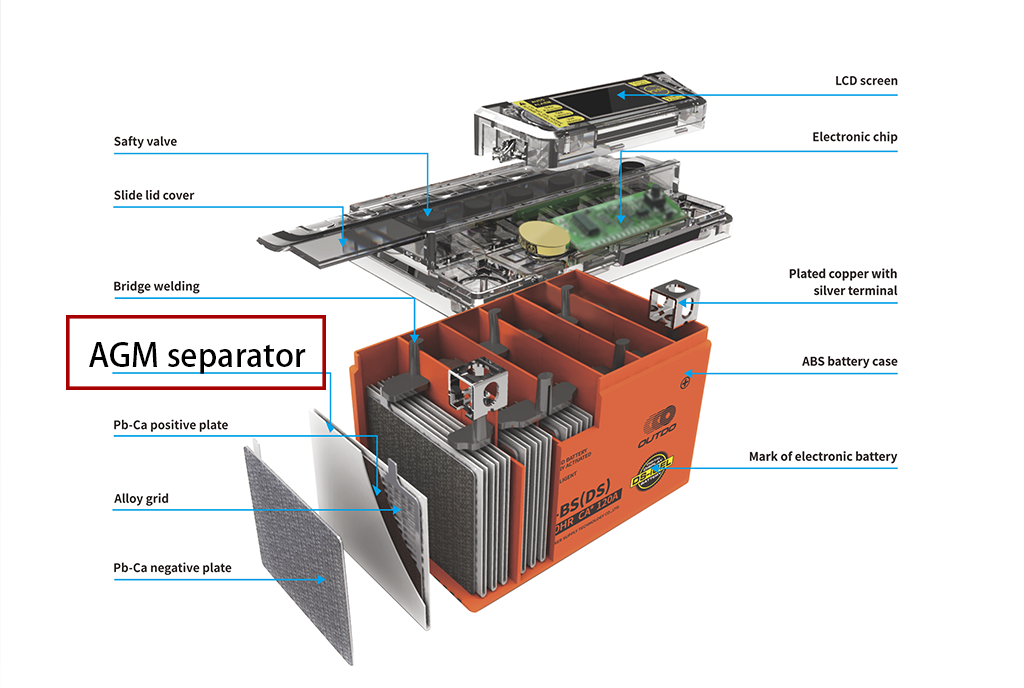
AGM and GEL are two different technologies applied to lead-acid batteries. GEL batteries transform the battery acid into a thick gel, making them highly resistant to vibration and deep discharge. A key feature is that gel cell batteries can be mounted upside down, offering far more installation flexibility than traditional batteries.
4.2. Lithium: Li-ion and LiFePO4
Just like lead-acid, "lithium-ion" is a broad category. For applications competing with lead-acid, the most common chemistry is Lithium Iron Phosphate (LiFePO4 or LFP). A lithium ion battery comparison often defaults to LFP because of its stability and long life, making the lead acid vs lifepo4 comparison highly discussed. In the first part, we listed their differences in detail.
Advantages and disadvantages of lithium ion battery are significant. For example, lithium ion battery vs agm, the main advantages of lithium ion are high energy density and long cycle life, while the main drawbacks are thermal runaway risk and higher cost. It is a widely used battery technology, even though they have already been surpassed by the next-generation sodium-ion batteries in many areas.
FAQ
1. Which battery is better in very cold weather?
Lead-acid batteries are able to operate down to −20℃. Standard lithium-ion (LFP) batteries struggle with charging below freezing (−5℃) and can have reduced cranking power in very cold conditions. Sodium-ion batteries perform best in cold, as they have strong discharge capability at -20 °C, excellent low-temperature performance.
2. Are lithium-ion batteries safe?
Modern LiFePO4 batteries with an integrated Battery Management System (BMS) are very safe for their intended applications. The BMS prevents overcharging and overheating. However, lead-acid batteries have an inherently more stable chemistry, making them less susceptible to thermal runaway and fire, which is a key reason they remain trusted in vehicles.
3. Do I need a special charger for a lithium battery?
Yes. You should use a charger specifically designed for your lithium battery's chemistry (e.g., LiFePO4). A standard lead-acid charger may not have the correct charging profile and could damage the lithium battery or fail to charge it properly.
Conclusion
The best choice in the lithium vs. lead-acid debate depends entirely on your application. Lead-acid is a mature, reliable, and cost-effective technology that excels at providing high surge currents for starting engines. For deep-cycle applications where light weight, long life, and efficiency are paramount, lithium-ion is the superior technological choice. In addition, if you have higher performance requirements, sodium-ion batteries can also be considered.
FAQ
Latest Information



